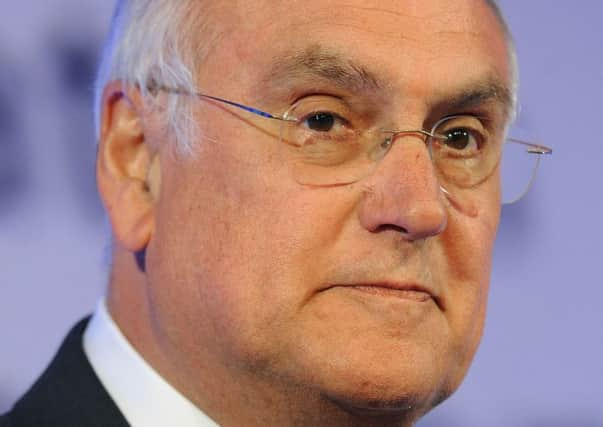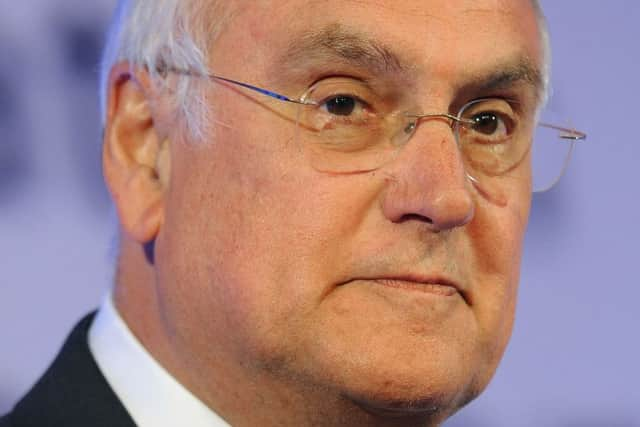Pupils in Yorkshire are the ‘least likely to go to a good school’


A new regional report for Yorkshire and the North East published today shows that a third of students go to secondary schools which the inspection watchdog has said are not good enough.
This is worse than anywhere else in England.
Ofsted classes Yorkshire and the North East as one region and produces an annual report showing how schools in these areas are rated following the past 12 months of inspections.


Advertisement
Hide AdAdvertisement
Hide AdThe watchdog can judge schools to be outstanding, good, requiring improvement or inadequate.
The report shows that overall there has been an improvement in primary school performance with 30,000 more children now attending good schools.
However Ofsted’s regional director Nick Hudson told The Yorkshire Post this was largely driven by primary schools in the North East which were now the best in the country, while primaries in Yorkshire actually had the worst inspection record of any region in England.
There are four areas of Yorkshire where less than half of pupils go to good secondary schools, according to Ofsted.
Advertisement
Hide AdAdvertisement
Hide AdIn Doncaster only 37 per cent of pupils go to good schools, in Bradford its 40 per cent. while in the East Riding its 46 per cent and in Barnsley its 48 per cent. However Barnsley and East Riding both have more pupils attending good secondary schools than a year earlier. Barnsley has seen a 25 per cent increase.
The Ofsted report also reveals large variations within Yorkshire. In York 93 per cent of pupils go to good secondary schools and in Rotherham the figure is 91 per cent.
Both nationally and in Yorkshire there are major differences between the proportion of good secondaries and good primary schools.
In his third annual report, published today, Ofsted’s chief inspector Sir Michael Wilshaw says while primary schools in England continue to forge ahead, the rate of improvement in secondary education is grinding to a halt, with the overall proportion rated good or outstanding remaining the same as last year.
Advertisement
Hide AdAdvertisement
Hide AdHowever the Government insisted there have been “incredible” improvements in secondary schools in recent years which should be recognised.
And head teachers reacted angrily to Sir Michael’s conclusions and rejected the assertion that standards in secondary education have stalled.
There are now around 170,000 pupils at secondary schools rated inadequate - the lowest Ofsted rating available, the chief inspector’s report says.
This is up by 70,000 compared with two years ago.
At primary school level Doncaster has the lowest level of children attending good primary schools in Yorkshire and the second lowest in the country - at 58 per cent.
Advertisement
Hide AdAdvertisement
Hide AdOfsted figures show that authorities which have traditionally had low levels of academic attainment at secondary school - such as Hull and Barnsley - actually have more pupils going to good primary schools than North Yorkshire.
The figure for Hull and Barnsley - 79 per cent - is one per cent higher than North Yorkshire.
Calderdale has the highest proportion of pupils going to good primary schools in Yorkshire at 88 per cent.
Commenting on the regional report Mr Hudson who is the Ofsted director for Yorkshire and the North East said: “The biggest challenge we face is the poor performance of the area’s secondary schools.
Advertisement
Hide AdAdvertisement
Hide AdToo many young children have a good or better education at their primary school, only to then attend a school that must improve.”
Mr Hudson said that Yorkshire needed more outstanding school leaders in areas of the greatest need.
Nationally the proportion of secondaries rated as inadequate has risen in the last 12 months, with over 50 more schools now in special measures than there were a year ago, according to Sir Michael.
Speaking at an event to mark the launch of the report, Sir Michael said primaries continue to improve because school leaders are focusing on the basics, such as the quality of teaching, behaviour and communicating with parents and the local community.
Advertisement
Hide AdAdvertisement
Hide AdSchools that are failing often do so because they have not got the “essentials” right, the chief inspector suggests, and suffer from issues such as “indifferent” teaching and poor behaviour.
Figures published by Ofsted earlier this month showed that 29 per cent of state secondaries were rated as less than good as of the end of August, compared to 18 per cent of primaries.
A total of 147 secondary schools were in special measures at the end of August, compared to 91 at the start of the last full academic year in September 2013.
There have been major overhauls of Ofsted inspections in recent years, with more focus on schools rated as “requires improvement” or “inadequate”.
Advertisement
Hide AdAdvertisement
Hide AdIn a recent speech to head teachers in Norfolk, Sir Michael said that in his last annual report, he had been able to point to “unmistakeable” signs that England’s education system was improving, with more schools getting to “good” at a faster rate than at any other time in Ofsted’s history.
But he added: “Since then, we have seen primary schools continue on their impressive upward trajectory, although there are some worrying signs that overall standards in our secondary schools are stagnating - in terms of both inspection judgments and, it would seem, examination results.”A Department for Education spokesman said: “We share Sir Michael Wilshaw’s ambition to keep raising standards in secondary schools but we should acknowledge we have seen incredible improvements in recent years - all achieved against the backdrop of Ofsted’s much tougher inspection framework which leaves no room for underperforming schools to hide.
“We now have more than one million more children being taught in good or outstanding schools since 2010. This has been accomplished by acting swiftly on underperformance, encouraging high quality schools to open and unleashing a wave of teaching talent across the country through our excellent teaching schools.”
Brian Lightman, general secretary of the Association of School and College Leaders (ASCL), said: “ASCL rejects the assertion that improvement in secondary schools has stalled.
Advertisement
Hide AdAdvertisement
Hide Ad“Ofsted has failed to recognise that overall attainment by 16-year-olds is effectively capped by the current GCSE awarding process. As student attainment is the critical element in the Ofsted grading, it is no surprise that the proportion of schools graded good or better is relatively unchanged.”